C_S4FCF_1809- SAP Certified Application Associate
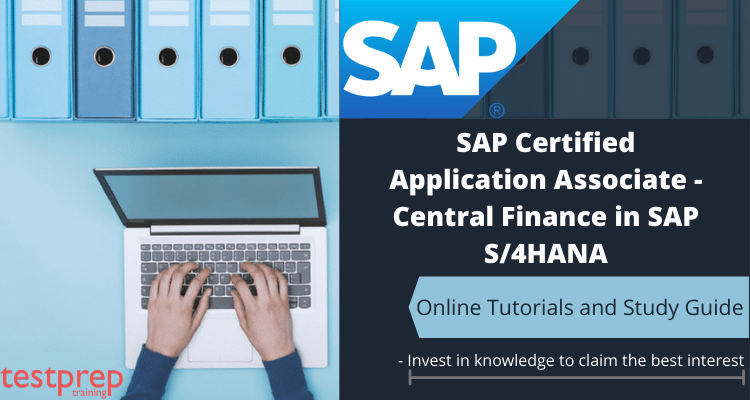
SAP C_S4FCF_1809 exam validates that the candidate has the fundamental and core knowledge required of the Central Finance profile. This certification exam will prove that the candidate has an overall understanding and in-depth technical skills to participate as a member of a project team in a mentoring role.
Who should take the exam?
The certification exam is specially designed for consultants who aspire to have an entry level qualification. It targets Software professionals and consultants to contribute in Central Finance Implementation Projects.
Learning Objectives
The main objective of SAP Certified Application Associate C_S4FCF_1809 Exam are-
- Understanding the use cases of sap central finance
- Explaining the concept and architecture of central finance
- Understanding the main requirements in the sap central finance project
- Providing basic knowledge on how to setting up and configuring a sap central finance landscape
- Providing basic knowledge on how to execute a sap central finance project
Exam Details
SAP Certified Application Associate – Central Finance in SAP S/4HANA exam consists of 80 questions. Candidates will have 180 minutes to pass the exam. A minimum score of 65% is required to pass the exam. The cost of the certification exam is $549 USD. Also, the exam is available in 4 languages, namely English, German, Spanish, and Chinese.
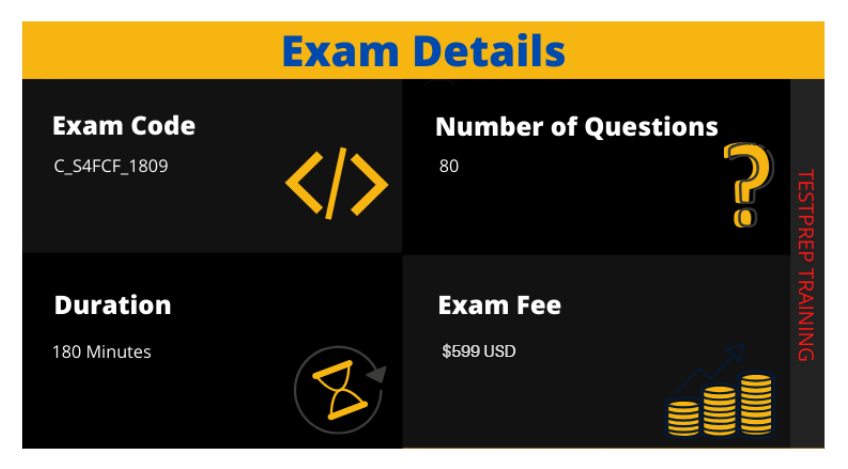
How to schedule the exam?
Interested candidates can schedule the exams on Certification Hub. There, the list of exams will be available on the Exam Dashboard menu. Candidates can schedule a suitable exam appointment time and date.
Exam Detailed Course Outline
The SAP C_S4FCF_1809 syllabus, covers the following 12 domains in its course.
Reference: SAP Certified Application Associate – Central Finance in SAP S/4HANA
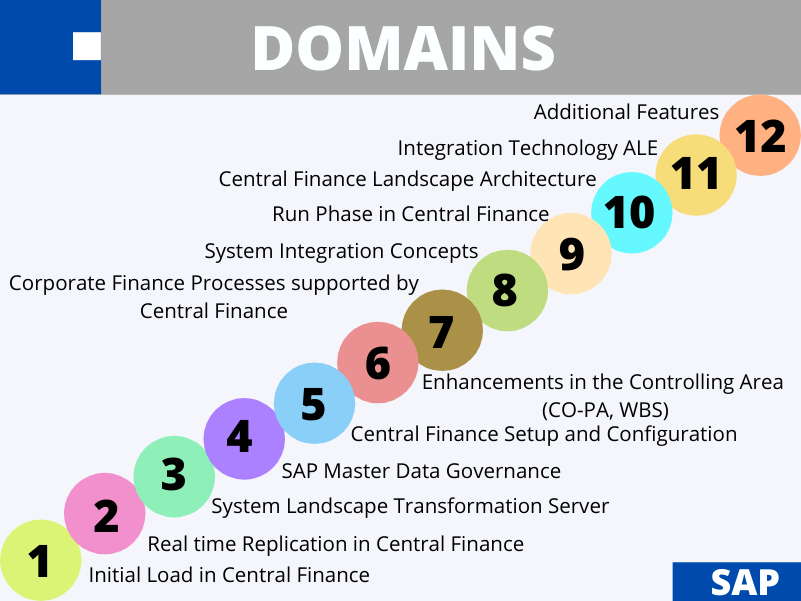
1. Initial Load in Central Finance (> 12%)
- Describing how to set a filter for the initial load of cost object.
- Resolving errors of cost object initial load.
- Executing initial load of fi/co postings.
- Resolving errors of fi/co posting initial load.
- Set filter for the initial load of co internal posting, and resolving errors of co internal posting initial load.
- Defining validation and reconciliation in central finance.
- Performing reconciliation reports in central finance.
(SAP Reference: Initial Load in central Finance)
2. Real time Replication in Central Finance (8% – 12%)
- Describing prerequisites to activate real time replication.
- Starting real time replication.
- Correcting errors of real time replication.
- Explaining the document flow functionality of central finance.
- Performing document drill back from target system to source system.
(SAP Reference: Central Finance)
3. System Landscape Transformation Server (SLT) (8% – 12%)
- Describing options for activating data replication and how to transfer data, including how to change structures to source tables during replication.
- Configuring client specific and cross client replication.
- Describing starting recording and replication.
(SAP Reference: SLT Configuration for Data Replication)
4. SAP Master Data Governance (8% – 12%)
- Describing mdg central governance and mass processing.
- Describing the general concepts and capabilities of sap mdg, central governance.
- Activating and configuring the default processes for mdg. defining mdg data models.
(SAP Reference: Central Finance Configuration-A Pathway to S/4HANA)
5. Central Finance Setup and Configuration (8% – 12%)
- Configuring the scope for the initial load of fi/co posting.
- Defining decimal places for currencies.
- Differentiating between key mapping and value mapping.
- Defining mapping actions for mapping entities.
- Defining key mapping and value mappings.
- Configuring cost object mapping scenarios.
6. Enhancements in the Controlling Area (CO-PA, WBS) (8% – 12%)
- Explaining improvements made when replicating from costing-based co-pa into profitability analysis in the universal journal.
- Understanding account-based co-pa cogs split in central finance.
- Defining account-based co-pa price split in central finance.
- Describing the new replication scenario for internal ec-pca postings.
- Explaining the simulation tool for ec-pca and the profit center comparison report.
- Describing how wbs elements and project structures can be transferred to central finance to enable a central reporting on projects.
(SAP Reference: Defining Versions)
7. Corporate Finance Processes supported by Central Finance (8% – 12%)
- Defining centralization of finance operations.
- Describing intercompany reconciliation in central finance.
- Determine open item management in central finance.
- Configuring central payments and central down payments.
- Describing ar/ap reporting in central finance.
- Defining sap credit management.
- Describing the integration of credit management with central finance and the relationship between credit management and central payments.
(SAP Reference: Central Finance, Different views on what is Central Finance)
8. System Integration Concepts (< 8%)
- Describing technical communications modes and processes.
- Designing the types of communication transfer modes.
- Explaining business scenarios and the business hierarchy used by sapconfiguring rfc between two sap systems, or non-sap system.
9. Run Phase in Central Finance (< 8%)
- Designing the sap s/4 hana central finance project phases.
- Determining the sap s/4hana central finance pilot approach.
- Describing the required organizational change with sap s/4hana central finance.
- Determining the stakeholders involved in a central finance project.
- Defining the change enablers and key success factors.
- Designing the operation model for central finance, and daily operations that might be needed in central finance.
10. Central Finance Landscape Architecture (< 8%)
- Defining options to sap s/4hana central finance architecture links source systems to the central finance system.
- Designing slt techchnical integration platform for central finance.
- Describing mdg function in central finance for master harmonization.
- Descripting aif as interface and monitoring for central finance.
11. Integration Technology ALE (< 8%)
- Differentiating application link enabling (ale) from electronic data interchange (ed).
- Defining logical system or logical system name, message type, and distribution model.
- Designing distribution model.
- Configuring logical system names and assign them to clients in sap systems.
(SAP Reference: ALE Integration Technology
12. Additional Features (< 8%)
- Describing the new replication scenario for internal ec-pca postings.
- Explaining the simulation tool for ec-pca and the profit center comparison report.
- Describing how wbs elements and project structures can be transferred to central finance to enable a central reporting on projects.
Exam Policies
SAP certifications offers a wide range of credentials that helps aspirants demonstrate their skills across the SAP landscape. To help things out, SAP provides exam policies to the aspirants who who are looking to be placed in a SAP environment. These exam policies are an inclusion of exam details, exam basics, pricing, special request, scoring and other pertinent details regarding the SAP certifications.
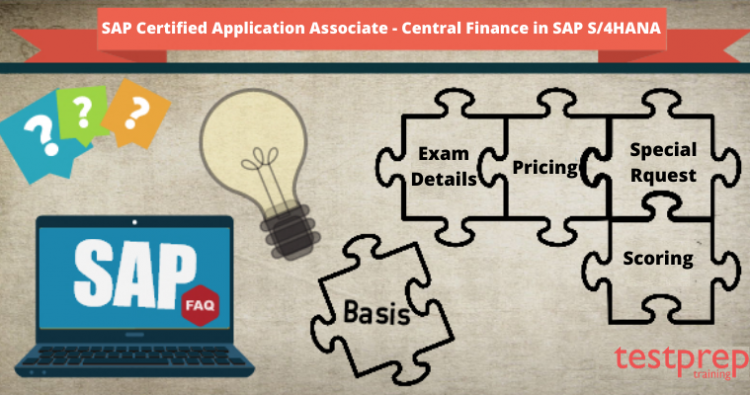
For More Visit: C_S4FCF_1809- SAP Certified Application Associate FAQs
SAP C_S4FCF_1809 Study Guide
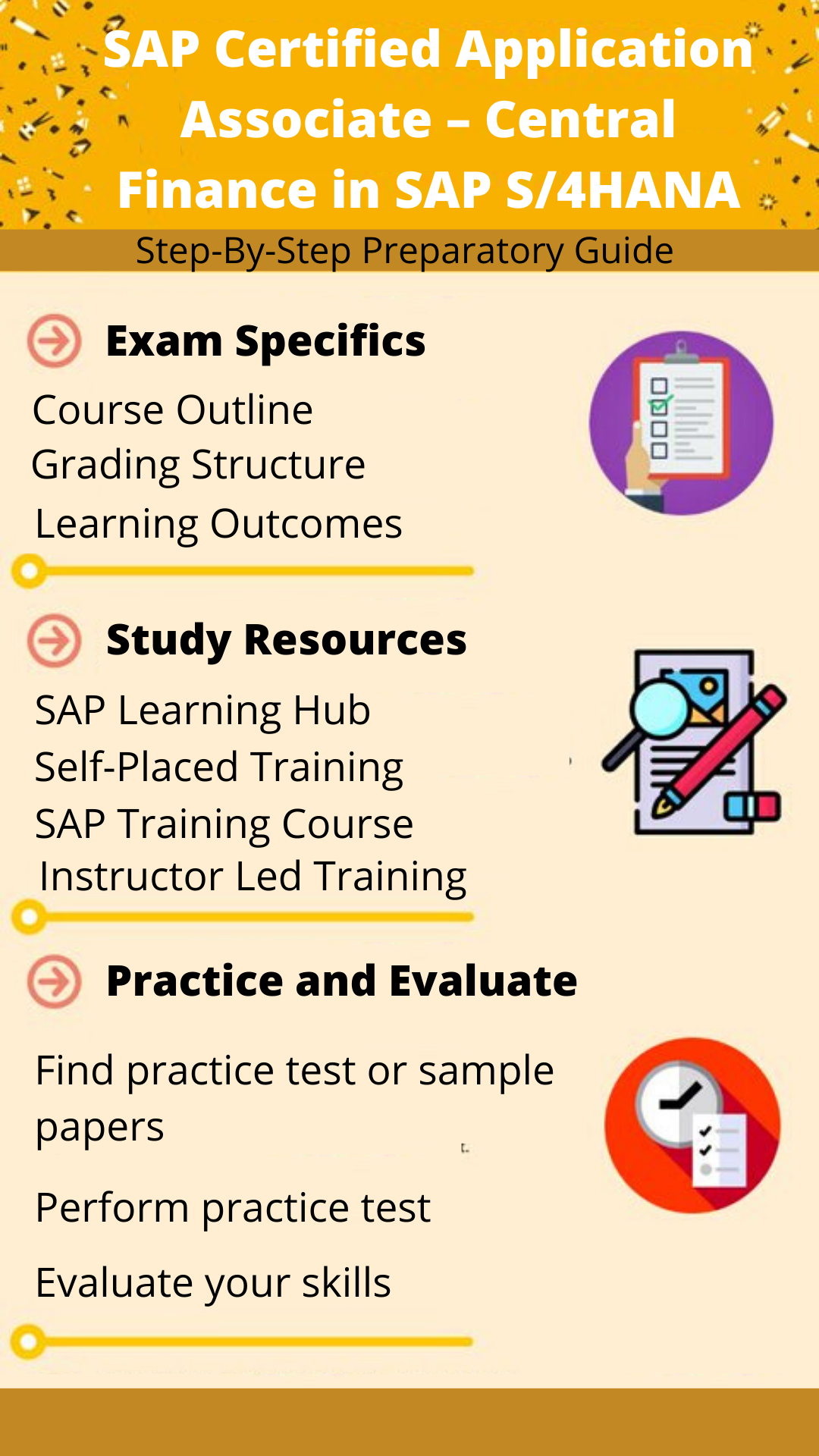
SAP Learning Hub
SAP gives candidates access to learning hubs to help them in building and maintaining their skills with:
- self-paced digital learning content that includes e-books.
- expert-led social learning forums.
- access to preconfigured training systems for real-world practice.
Candidates will have access to a community of learners and self-paced e-learning courses with expert-led live sessions, and collaborative social learning rooms. Moreover, this will enhance your SAP skills as well as it will help you to connect with SAP experts. It provides access to SAP live that helps candidates to get hands-on system practice.
Self-paced Training
SAP provides self-paced training that offers candidates a wide range of learning styles and subject-matter requirements. This training helps project team members, support professionals, end-users, and power users to meet their needs that are accessible from anywhere. This covers two modes that are:
SAP E-Learning
SAP E-Learning is single course access that provides highly interactive, Web-based courses that enable candidates to take and deliver timely, focused training for organizations. The students at E-learning can decide when and where they will access their training and can repeat learning units as many times and as often as needed. Moreover, E-learning courses include highly effective instructional elements and simulations based on real-world business scenarios.
SAP E-Academy
SAP E-Academy refers to an e-learning solution-based course that helps students to achieve expertise in specific SAP solution areas or prepare for a certification exam. However, with SAP E-Academies, students are provided access to a self-paced learning environment enabling them to access:
Online Learning Content
In this the content is delivered to candidates in an e-learning format consisting of presentation slides with audio commentary, system demonstration/practice simulations, slide notes, and mentor tips. This covers the SAP C_S4FCF_1809 syllabus and exam guide.
SAP Training Systems
With this the student can use the live training systems hands-on to test their own business process scenarios, complete exercises from their student manual and view demonstrations.
Help Desk Support
Sap provides help desk support throughout the learning access period, with all queries being answered within 24 hours Monday-Friday. Students get technical support for their learning environment unique features.
Instructor Led Training
SAP provides Instructor-led training that provides candidates hands-on learning experience with a subject matter expert to guide. Secondly, it provides options to virtual live classroom (VLC) training that has the same comprehensive live training from SAP experts without the need to travel by using seamless over-the-Web connectivity. Then, it has customer-specific training in which the candidates receives the same comprehensive live training from SAP experts but for your company
SAP Training Course
To ensure success, SAP recommends training courses to help candidates prepare for the exam. These SAP C_S4FCF_1809 training courses are intended to ensure that the candidates strong understanding of SAP exams, starting from their basics. Training courses by SAP increase your ability to apply the knowledge you have gained in training. Each domain covered in the exam has its respective training courses that be taken online at the SAP official website.
Practice Test
The evolution of practice tests from pen-paper to online mode has done nothing but added more efficiency to the exam preparation process. The use of the SAP C_S4FCF_1809 practice exam tests helps the potential aspirants to sail through the exam with complete ease. The reason being, candidates are already aware of the exam environment. Also, they have a cue regarding questions that will appear in the actual scheduled exams.
Boost your earning potential and prepare for SAP Certified Application Associate C_S4FCF_1809 Exam. Start your preparations now!

